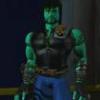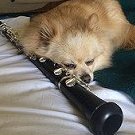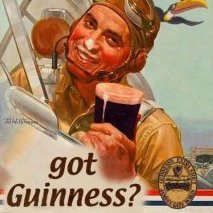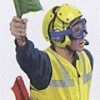-
Posts
1,019,581 -
Joined
-
Last visited
-
Days Won
42
Mike last won the day on February 27
Mike had the most liked content!
About Mike
- Birthday 09/05/1967
Profile Information
-
Gender
Male
-
Location
Chester, UK
-
Interests
Aircraft, AFVs & Sci-Fi
Recent Profile Visitors
139,917 profile views
Mike's Achievements

Constant Member (9/9)
36.4k
Reputation
-
Wouldn't be much of a Mod if I couldn't
-
aboard Stuart
-
They’re 2-part epoxy putties. I bought some in the past from the UK, so they’re available somewhere, but it’s so long ago since I bought mine, I couldn’t tell you where I got it from. You can roll it wafer thin, as long as you have a bit of talc on both rolling surfaces, a bit like rolling out pastry. They’re very much finer textured than Milliput, although you can still roll that out, just not as finely. Figure scupltors use the other products because of their features, sometimes both at once, as each has its own special merits. You’d have to ask a sculptor what those are though, as I picked up that information in passing several years ago. I’ve slept an awful lot since then
-
Don’t the figure sculptors roll out sheets of Magic Sculp or Super Sculpy and lay bits of it over the figures? Texturing it could be achieved by pressing it lightly over a a cloth or some other texture, but you’d need a bit of skill. That’s probably why I don’t do it
-
My best guess is harmless nonsense? 🤡
-
I'd agree with Ross, tape is best. Paint it white, mask, optional second coat of white or clear to seal the edges, and then bang some red over it, all coats as thin as you can manage, then maybe seal it with a couple of coats of clear varnish, and gently sand to even out any ridges. The only issue I could foresee is the thickness of the strip needing to taper with the lance. In that case, you might need someone with a good grasp of maths, or a bit of trial and error with cutting the tape to a taper.
-

Building a cyclecar ( Grafton style ) scale 1/1
Mike replied to HK-500's topic in Vehicle Discussion
I've only just "tuned in" as they say, and although it's technically making a cycle that thinks it's a car in IRL scale, you're building the thing out of DIY products and such, so it's a lot more like modelling that say, restoring a traditional car in IRL scale. I'm not going to be a grinch about it, so there -
No worries... I've got brain today anyway, so just ignore me
-

Making up my Father's RAF flying history collection
Mike replied to ClimbingKarabiner's topic in New Members
Hi Nick, and to the forum We've had someone draw our attention to this thread as it seems to be turning into a Work in Progress thread after your initial introduction posts. Do you intend to keep on with the building here, or start a new thread? We'd have to move the whole thread into WIP Aircraft if so, but if you'd like me to separate the Modelling content from your intro, I can set up a new thread with those posts in WIP, which you can link to in here so that people can see where you've gone to extend your collection. Drop me a PM when you've had a moment to ponder what you'd prefer -
Still showing as "Boeing B-17G™ Flying Fortress™, 774th Bomb Squadron, 463rd Bombardment Group (Heavy), Italy, July 1944." on Airfix's site, which is the same as was written on the instructions. https://uk.airfix.com/products/boeing-b-17g-fortress-mkiii-a08018a
-
Boeing B-17G/Flying Fortress Mk.III (A08018A) 1:72 Airfix The B-17 that first flew in 1935 was quite a different aircraft than the one that flew during WWII, having a glossy bare metal finish, a traditional vertical tail with no fin fillet, and lots of bulging art-deco glass. The press coined the term "Flying Fortress" because of the number of gunnery positions around the aircraft, which stuck and was later trademarked by Boeing. Its first attempt to gain approval and induction into the USAAF was foiled by an unfortunate accident that wrote off the prototype and killed the pilots, but it was given a second bite at the cherry because of its comparative performance, and was eventually accepted into service with more powerful Cyclone engines and without the blister-type waist gunner windows. The E model (British Fortress Mk.I) was probably the first "real" fortress, with a large expanded tail, tail gunner position and guns in the nose. It also has the familiar ball-turret on the underside that stayed with it throughout the rest of production. The F model (British Fortress Mk.II) brought in some more changes, most notable of which is the almost frameless nose glazing, which afforded the bomb-aimer a much better view, although he must have felt commensurately more exposed as a result. The G model with its jutting remotely operated chin-turret was the final mark of the war, and fought doggedly over Europe with a formidable offensive armament consisting of 13 guns. This of course was at the expense of bomb-load, which diminished with the distance from home that the Fortress was sent to bomb. In British service it was known as the Fortress Mk.III, where it served with Coastal Command in small numbers. Post war the B-17 was converted and used in a number of civilian roles, as well as some remaining military and pseudo-military roles such as Coast Guard or search and rescue. There are still a comparatively large number of airframes in airworthy condition, and most Brits that have been to the air show circuit have probably seen the Sally-B at some point in their lives. The Kit Airfix released this kit back in 2016 and then followed it up a year later with an RAF Fortress III version and a couple of special editions, one with diorama potential, the other with extra decals. This kit is a rebox of the original release but with a new sprue and decal options. The red top-opening box is adorned with the usual high-quality digital artwork from Adam Tooby, this time showing a stream of Fortresses on a bombing run. Inside the box are ten sprues in mid-grey styrene, a clear sprue, decal sheet, and the instruction booklet that is printed on white paper with spot colour. Inside the booklet are two separate folded A3 sheets of glossy paper that contain the profiles for the two decal options on one sheet, and the stencil locations for the British and US variants on a separate sheet of line drawings to keep the profiles uncluttered. The mouldings are clean and crisp as we’ve come to expect from Airfix, with fine, recessed panel lines and plenty of crisp detail on smaller parts, bomb bays, gear bays and the interior. Construction begins with the cockpit, building up an open-topped box with two pairs of rudder pedals in the raised forward area, separated by a two-part centre console, adding control columns with semi-circular yokes at the top, locating them in small recesses near the rear of the raised section. The flight crew seats are built from a single-part seat with two sets of legs and a piece of armour at the back, slotting them into the main floor, at which point you realise the length of the legs. A stepped bulkhead is inserted in front, fitting the full-width instrument panel after detail painting and applying the dial decals under the coaming to add realism. The bomb bay walkway has a pair of bomb ‘ladders’ attached to slots, making side frames with their own ladders, each with slots to accept bombs, which are made from a two-part body and separate fin unit, following the scrap diagram to align them correctly. One bomb is installed on each ladder, sliding them into the rear spar if you are modelling the US Fortress, while the British decal option leaves the bombs on the sprues, but retains the ladders, both options adding a section of the roof to the spar, then closing the assembly with a shorter forward spar. The rear of the aft spar is detailed with four radio equipment parts, following the detail painting instructions, then the cockpit is installed to the forward spar, extending the interior before building the rear compartment. A long floor section has a bulkhead with three more equipment boxes and a pair of three-part swivelling seats fitted forward of the belly gun cut-out, with more detail painting needed before proceeding. The fuselage halves have ribbing moulded into the interior where it will be seen, and waist gunner windows can either be fixed in place, or left off, drilling out several holes, fitting a small square window over the wing root, and opening the slot in the upper nose to accept a bull-horn antenna late in the process. The forward interior is slipped into position in the port fuselage half, adding the rear behind it, which locates on tabs in the fuselage and on the rear spar. If building the British decal option, a blanking plate is inserted into the belly gun cut-out, as they were removed and faired over to allow more weight for fuel on longer flights. A gear bay insert is added behind the floor for the tail wheel, fitting a large ammo box in the sides that feeds the waist guns, each with moulded-in supports. Another pair of crew seats are built for the nose crew from three parts each as before, but the bomb-aimer’s chair has a different set of legs and the famous Norden bombsight in front, adding an equipment box, ammo supply and a tubular mount for the nose gun for the US option, omitting the ammo and fitting a box on the raised left side after drilling out a location hole from the underside. Scrap diagrams show the correct orientation of the interior parts from the front for both options to assist. If building a US airframe, the belly turret is made from a clear portion of the bulb, fitting an insert, then sliding a pair of guns through the holes from within before adding one side of the glazing, the rudimentary seat, then the other side to complete the sphere. The completed turret is then clamped in a two-part mount, adding a suspension arm to the top, then trapping the top end in a curved fixture with a styrene washer that should allow it to rotate if you are careful with the glue. The completed assembly is then glued into the roof of the fuselage through the holes in the fuselage and floor, and can be posed semi-retracted or deployed for operation as you wish. The fuselage can then be closed, trapping the two-part rudder panel between the tail halves as you do, dealing with the seams in your preferred manner once the glue has fully cured. The wings are prepared by adding three inserts around the inner nacelle lowers to form the main gear bays, fitting another section of skin to the outer face that has the supercharger trunking moulded-in. A bulkhead with engine mounting stub is inserted in the nacelle, adding more detail to the side opposing the trunking, with the help of some scrap diagrams that show correct alignment, strengthening the assembly by placing a bundle of cables/hoses in the centre of the roof of the bay, before inserting a pair of twin intakes in corresponding holes in the lower wing leading-edge, slipping another pair of inserts on a carrier between the nacelles. The ailerons can be posed clean or deflected anywhere up to 12° in either direction as you please, filling the outer nacelle with a circular bulkhead that also has an engine mount moulded into its centre, fixing another pair of inserts on a carrier into the inner wing toward the trailing edge, after which you can close the wing halves, repeating the same process for the opposite side. The completed wings are then mated with the fuselage by sliding them into position over the two wing spars, gluing them into position, allowing the glue to set with the aid of a jig or jury-rigged contraption to ensure correct alignment of the wings. The elevators have separate single-thickness control surfaces, making the panels themselves from two halves each, inserting the completed assemblies in slots to the sides of the tail, and noting that they can be deflected either 23° up, or 14° down to add a bit of individuality to your model. All four nacelles have two-part superchargers inserted in recesses in the underside, adding extra trunking into the recesses on the inner nacelles, following which the engines can be made from three parts each, the front cylinder bank, intake spider, and exhaust collectors, which differ between the inner and outer engines. After detail painting the engines and installing them to the front of the nacelles, two-part cowlings can be slipped over them, with a choice of open or closed cooling gills in the rear, as shown in scrap diagrams nearby. The first gear leg is the diminutive tail-wheel, which has a two-part strut and separate wheel, fixing it to the bay installed earlier, following which the main gear is started by gluing the two hub halves together, then sliding them through the two-part wheels, which have diamond or circumferential tread and a small flat spot moulded-in, with the option of posing the gear retracted or deployed as you prefer. There are no bay doors to hide your sins however, requiring two parts to depict the struts, rolling the wheel around to hide the flat-spot within the bay, gluing them in place with the assistance of accompanying diagrams. The deployed gear option also uses two parts, first adding one, then the other into the bay, followed by your choice of tyre tread patterns. You also have a choice of open or closed bomb bay doors, the latter achieved by simply cutting away the hinge-tabs from the single bomb bay door part and gluing it in place in the bay. To open the doors, you must first score and cut the bay door part in two along the pre-weakened seam-line, adding a pair of actuator jacks into the front and rear of the bay so that the doors can be fitted at the correct angle to show off the bombs. The Flying Fortress lived up to its name by bristling with .50cal machine guns from almost every aperture, which were intended to give full coverage against enemy fighters when flown in tight formation. The tail guns consist of a pair of guns that are slotted through the rear lens into a vertical pivot, which is in turn attached to the two-part clear fuselage section, adding a one-part depiction of the floor and ammo supply before it is glued to the rear of the fuselage under the tail fin. Another pair of guns are mounted on a pivot and trapped between two halves of a cylindrical turret that has two small windows in the rear, mounting it under the nose in a recess, adding a teardrop-shaped aerodynamic fairing behind it. The British decal option mounts a small radar instead of the turret, then covering it with a different all-encompassing aerodynamic fairing over it. The upper turret has a basket added under its ring, fitting the twin guns into recesses in the top, either aerodynamically posed level for travel, or elevated for battle, dropping the turret into position behind the cockpit, installing the glazing later at the same time as the canopy. A single rear upper gun is slid through the large window in the rear of the crew blister, adding a small aerial mast on the spine, and inserting the waist guns through the windows, and a hatch with window into the port fuselage side aft of the wing trailing edge. If you have elected to open the waist windows for action, two small supports are added to the lower edge of the cut-outs, mounting the gun in the socket just inside the lower frame. The British decal option has a pair of fairings fitted under the fuselage just behind the waist gun positions, locating on a hole in the underside. Clear landing light lenses and their covers are added to each wing outboard of the engine nacelles, then the nose is finished by adding clear side panels that have ribbing moulded-in, and an optional cheek gun pushed through a hole from the inside before installation, adding a lozenge-shaped window to the centreline at the top. Behind that an astrodome is inserted in a circular cut-out, with the fairing moulded into the clear part for a clean join, adding the clear nose cone to the tip, and the main canopy over the cockpit, with a bull-horn antenna between the two top nose windows for both options, finished by placing the glazing over the top turret as previously mentioned. Another antenna is mounted under the tail gun for the British option along with another pair of masts on the fuselage. The final act is to add the props to each of the four engines, which are each made from a three-bladed prop with boss moulded-in, which pushes through the separate bell-housing of the engine, and is secured at the rear with a pin, carefully gluing the pin to the back of the prop if you wish to be able to move them later, inserting them into the centre of each engine, completing the engines and the model, so remember to paint the bell-housing before you get to this stage. Markings There are two decal options in this boxing, one in British colours, the other in USAAF service. There are differences in equipment fit that will influence your build process, so it’s a good decision to choose early. From the box you can build one of the following: B-17G, 774th Bomb Sqn., 463rd Bombardment Group (Heavy), Italy, July 1944 Fortress Mk.III, No.214 (Fe3derated Malay States) Sqn., No.100 (Bomber Support) Group, RAF Downham Market, Norfolk, England, 1944 Decals are by Cartograf, which is a guarantee of good registration, sharpness and colour density, with a thin gloss carrier film cut close to the printed areas. Both decal options have different stencils, so a second sheet of decal instructions are provided, consisting of line-drawings with the stencils pointed out to reduce clutter on the main painting and decaling sheets, which are both A3, and printed in full colour. Conclusion This isn't the only available kit of the B-17 in this scale, but it is up there with the best. This recent tooling has excellent detail and plenty of parts that include options specific to each airframe. It won't be a done-in-a-day build, but it should result in a rewarding experience. Overall, this kit is a real gem and should build up into an excellent model. Highly recommended Review sample courtesy of
- 13 replies
-
- 11
-

-

-
Appreciated
-
I just noticed that you've posted this twice, once in Vehicles, and here in the GB, which is against regs and we ask people not to do that. You made a comment early in the thread that a post had disappeared, so I'm wondering if another Mod has de-duped it before. I've merged both threads and de-duplicated your posts so people don't have to view the pics twice, but if anyone's said the same thing in both threads and they want them gone, just Hide it yourself, or Report it to a Mod to get it removed. Nice work on the Metro BTW. I remember playing Colin McRae's Rally on X-Box back in the day, and the Metro drove like it had a fifth castor wheel in the middle of the chassis
-
Insane, but the problem is that by flagging it up as bunk, you’ve given it more views by getting people to click on it. That will affect the stats, and consequently they’ll probably mark it as “successful”, and come up with another one like it. Depressing, eh? it’s all about the views, aka money.
-
I had the same problem with a microwave, a nice multi-use Panasonic. The cavity magnetron unit went, and It was about £30 extra to buy a new one with a full warranty. The right to-repair is one thing, but when they over-price the parts you need to make a cost-effective repair to discourage you, that's a whole different ball-game. Evil gits Meantime, we're being forced to throw away goods that are perfectly repairable because it's economical to do so, chucking tons of aluminium, plastic and steel away for the want of a few quid's worth of spare parts







_5.56mm_Rifle_MOD_45162138.thumb.jpg.053e4f85b299efc3857bfa5c1911dc3c.jpg)











